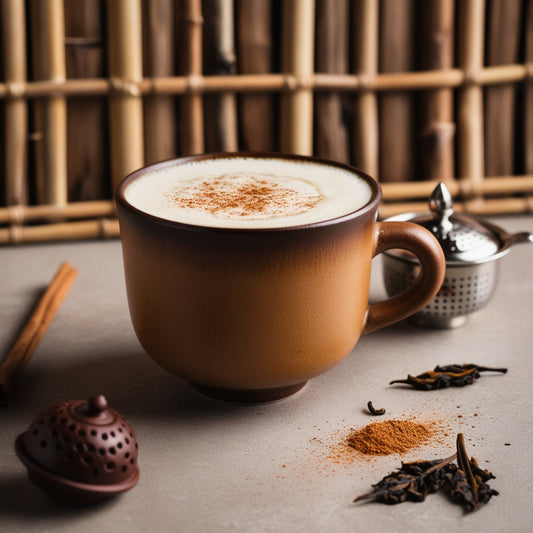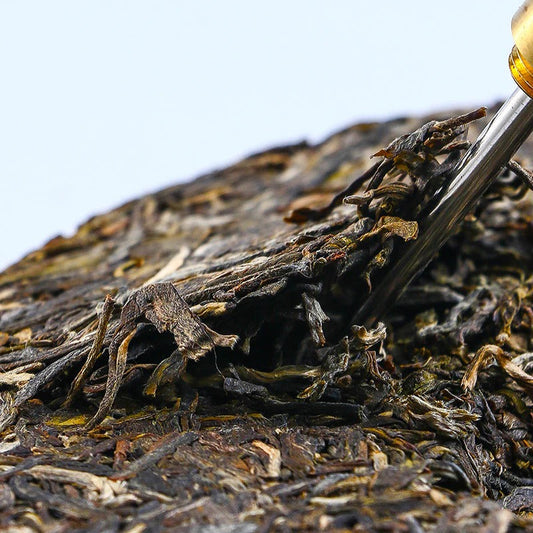Introduction
Imagine sipping a tea that has been aging for decades, evolving in flavor and complexity, steeped in centuries of tradition. This is the allure of Pu-erh tea, one of the oldest teas in the world, originating in the Yunnan Province of China around 225 BC. Here, the large-leaf Dayeh tea trees thrive in a unique climate and biodiversity. On the other hand, Rooibos tea, with its sweet, delicate, and earthy flavor. Hails from the Aspalathus linearis shrub native to South Africa. While both teas offer distinct health benefits. Pu-erh tea's deep-rooted history, intricate production process, and unique aging potential make it stand out. This article will delve into what makes each tea special. Helping you decide which one suits your palate and lifestyle best.
Table of Content
- Introduction
- What is Pu-erh tea
- What is Rooibos Tea
- Which tea is better
- Conclusion
What is Pu-erh tea
Pu-erh tea, one of the oldest types of tea in the world dating back to 225 BC, originates in the Yunnan Province. Where the large-leaf Dayeh tea trees thrive in the region's unique biodiversity and climate. Producers make Pu-erh tea in two types: Raw (sheng) and Ripe (shou). Classified by the processing level after picking and withering the leaves. To produce Raw Pu-erh tea, workers harvest large leaves of Camellia sinensis, swiftly roast them to halt oxidation, sun-dry the leaves. Steam them for compression into cakes or round disks, which are then stored to age and achieve the desired taste. This method, excludes the wet piling process, resulting in a tea that can age for 60 to 70 years. Evolving from bittersweet and floral notes to a chestnut aroma with a bright yellow color.
In contrast, Ripe Pu-erh tea undergoes a wet piling process after harvesting, withering, pan-frying, sun-drying, and initial aging. This method accelerates fermentation and aging. With the tea aired out once the desired fermentation is reached. Typically aged for about 10 years to reach its optimum taste, Ripe Pu-erh has an aging potential of 20 years. Developing a mild flavor, leafy rich aroma, and smooth, mellow taste with a dark red color due to the accelerated aging process.

What is Rooibos Tea
Rooibos (pronounced ROY-boss) tea is a red herbal tea made from the fermented leaves of the Aspalathus linearis shrub, a plant native to South Africa. This tea offers a sweet, delicate, and earthy flavor and is rich in antioxidants, which may contribute to its health benefits. Rooibos tea is caffeine-free, making it a good option for pregnant people, children, and those sensitive to caffeine. It contains several antioxidants, with the green variety having higher levels than the red. Notable antioxidants in rooibos tea include quercetin and aspalathin, which are important for heart health and may provide cardiovascular benefits by helping to keep cholesterol levels in check. Rooibos tea may also help people with diabetes manage their blood sugar levels, reducing the risk of complications. Being calorie-free, rooibos tea can be a good beverage choice for those aiming to lose weight or maintain a healthy weight.

Which tea is better?
Despite Rooibos tea's health benefits, Pu-erh tea stands out due to its deep-rooted history, intricate production process, and the ability to age and develop complex flavors over decades. Its health benefits, including aiding digestion, lowering cholesterol, and supporting weight management, combined with its cultural significance and unique aging process, make Pu-erh tea a compelling choice for those seeking to explore and experience the richness of traditional Chinese tea culture.
Conclusion
While both Pu-erh and Rooibos teas offer unique flavors and health benefits, Pu-erh tea stands out with its rich history, intricate production process, and remarkable aging potential. Its ability to develop complex flavors over decades, combined with its numerous health benefits, makes Pu-erh tea a compelling choice for those seeking to experience the depth and richness of traditional Chinese tea culture. On the other hand, Rooibos tea provides a caffeine-free, antioxidant-rich option ideal for heart health, blood sugar management, and weight management.
If you are passionate about tea and eager to explore new flavors and traditions, why not start with a cup of Pu-erh tea? Experience its unique aging process and evolving flavors, and immerse yourself in a centuries-old tradition that continues to captivate tea enthusiasts worldwide. Find high-quality Pu-erh tea and begin your journey into the world of this exceptional beverage today with Puerh Craft.
Q&A
Q. What makes Pu-erh tea different from other teas?
A. Pu-erh tea is unique due to its aging process and fermentation. Unlike most teas, Pu-erh can age for decades, developing complex flavors over time. Its two types, Raw (sheng) and Ripe (shou), offer distinct taste profiles, with Raw Pu-erh evolving from bittersweet and floral notes to a chestnut aroma.
Q. How should I store Pu-erh tea to ensure it ages well?
A. Store Pu-erh tea in a cool, dry place away from direct sunlight and strong odors. Use a breathable container, such as a clay jar or paper wrapping. To allow the tea to continue aging and developing its flavor over time.
Q. What are the health benefits of drinking Pu-erh tea?
A. Pu-erh tea offers numerous health benefits, including aiding digestion, lowering cholesterol, supporting weight management, and providing antioxidants. Its unique fermentation process also contributes to its potential probiotic benefits, promoting gut health.
Q. How does Rooibos tea compare to Pu-erh tea in terms of health benefits?
A. Pu-erh V/S Rooibos tea is rich in antioxidants like quercetin and aspalathin, which support heart health and blood sugar management. It is caffeine-free, making it suitable for pregnant people, children, and those sensitive to caffeine. While it offers significant health benefits, it lacks the aging potential and evolving flavor profile of Pu-erh tea.
Q. Can I drink Pu-erh tea if I am sensitive to caffeine?
A. Yes, but with caution. Pu-erh tea contains caffeine, although typically less than black tea or coffee. If you are highly sensitive to caffeine, you may prefer Ripe Pu-erh, which generally has a lower caffeine content than Raw Pu-erh.






